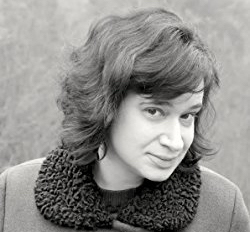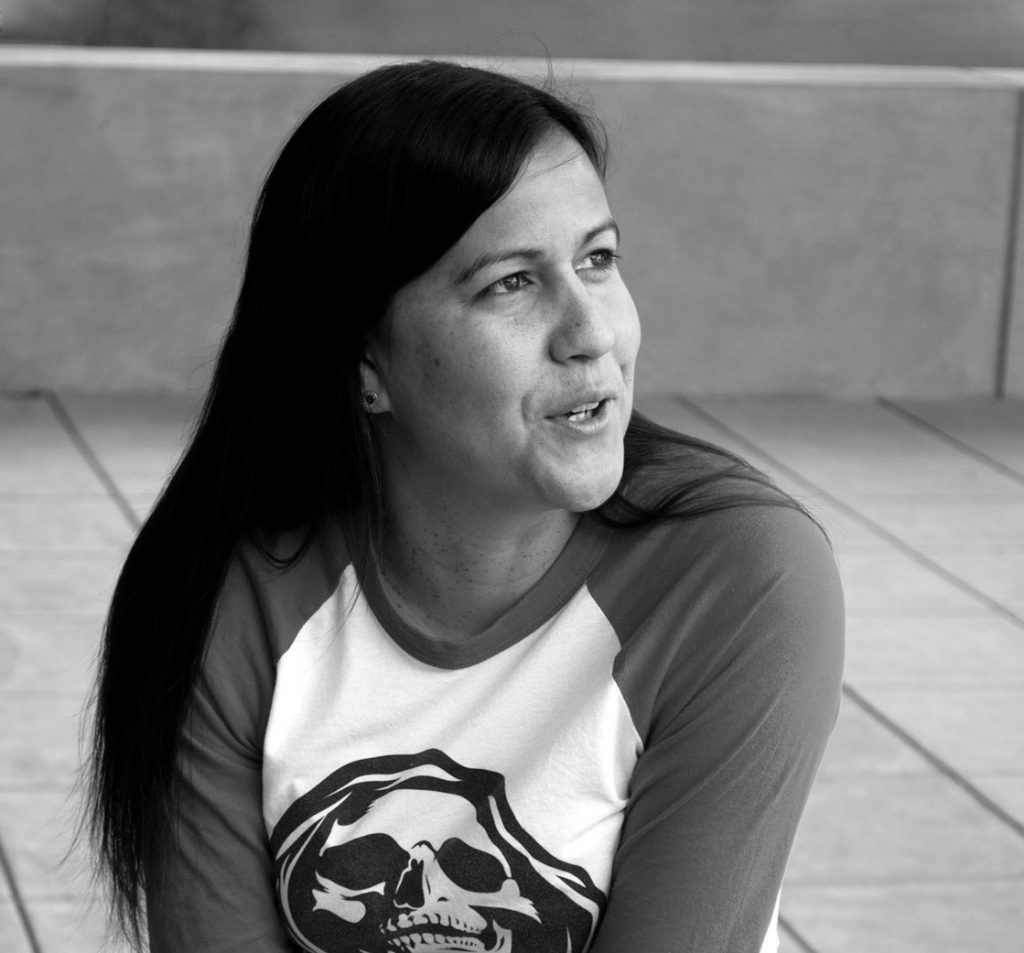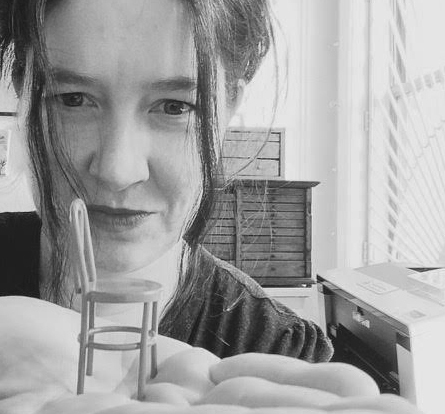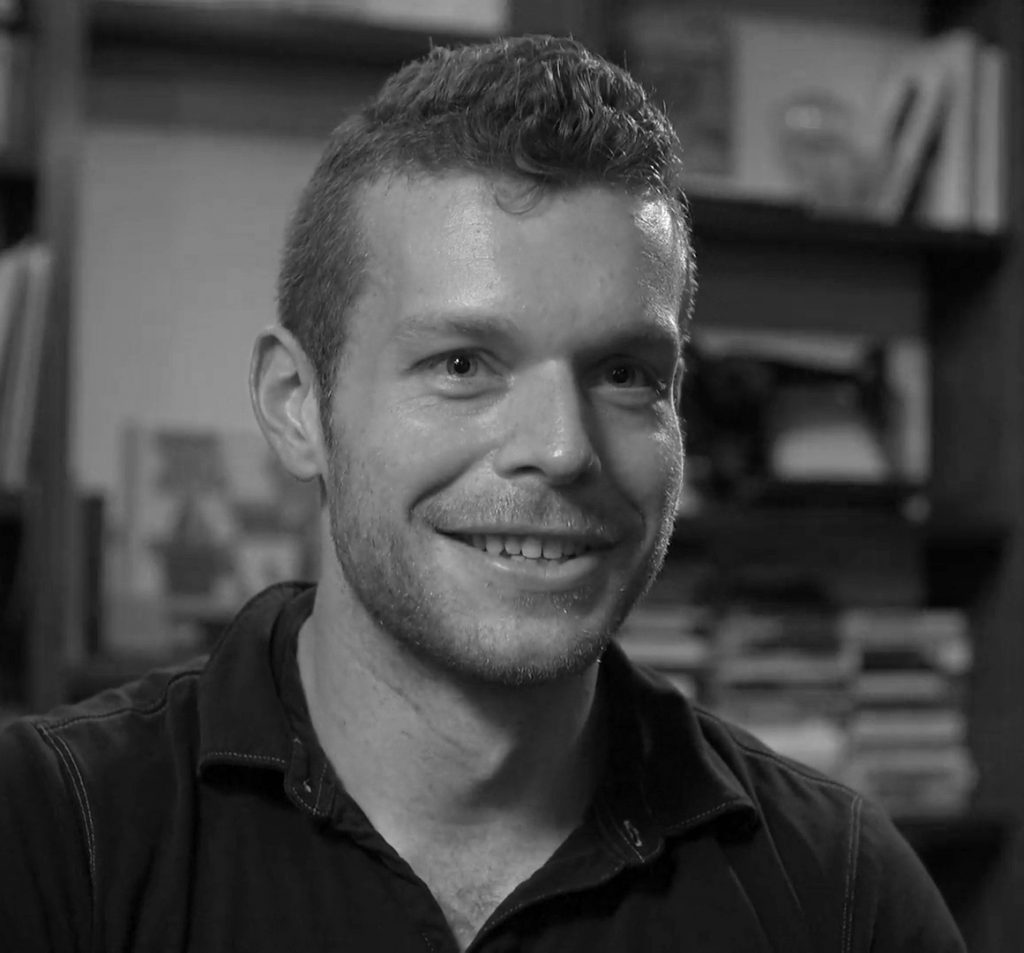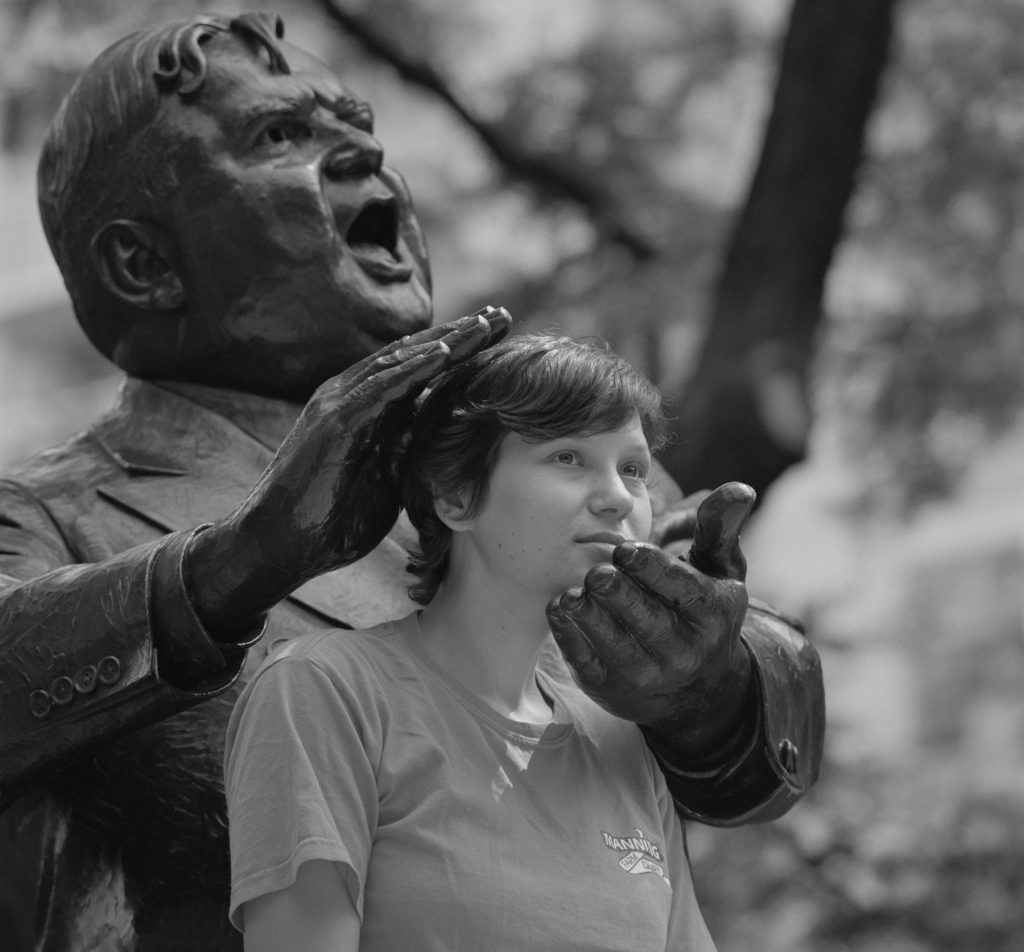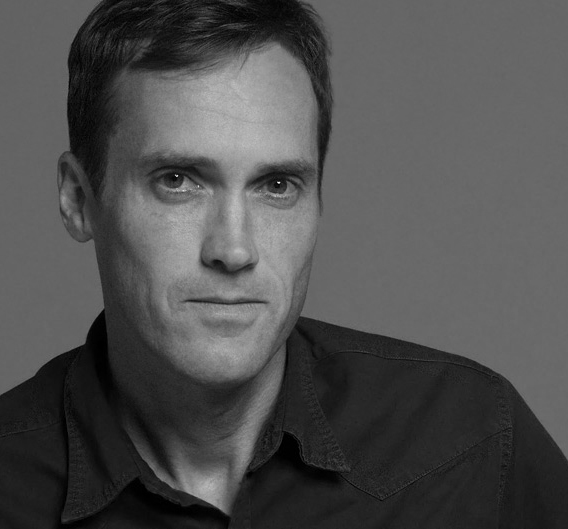
Sarah Archer is a writer, critic, and curator. She is the author of Midcentury Christmas and she is a contributing editor for American Craft Inquiry, a contributor to Hyperallergic, and columnist for the Magazine Antiques online. Check out Sarah Archer’s piece.

Tedi Asher is the neuroscience researcher at the Peabody Essex Museum. A Harvard Medical School doctoral graduate, she is the first neuroscientist to join the staff of an art museum. At PEM, Asher helps to inform exhibition design strategy by analyzing emerging neuroscientific findings and proposing recommendations to increase engagement and visitor impact. Check out Tedi Asher’s piece on how play has the power to heal.

Chris Bachelder is the author of the novels Bear v. Shark, U.S.!, Abbott Awaits, and The Throwback Special, which was a finalist for the 2016 National Book Award for fiction. He is a frequent contributor to McSweeney’s and The Believer, and currently teaches creative writing at the University of Cincinnati. Check out Chris Bachelder’s story.

Nashra Balagamwala is an experiential designer whose work frequently transforms controversial and sensitive topics into unique games, designs, and experiences. Prior to working in New York and Pakistan, she attended the Rhode Island School of Design and worked at Hasbro Inc. Read more from Nashra Balagamwala.

Pippin Barr is an assistant professor in the Department of Design and Computation Arts and associate director of the Technoculture, Art and Games Lab at Concordia University, Montreal, Canada. A game designer, he is the author of How to Play a Video Game. Read more from Pippin Barr.
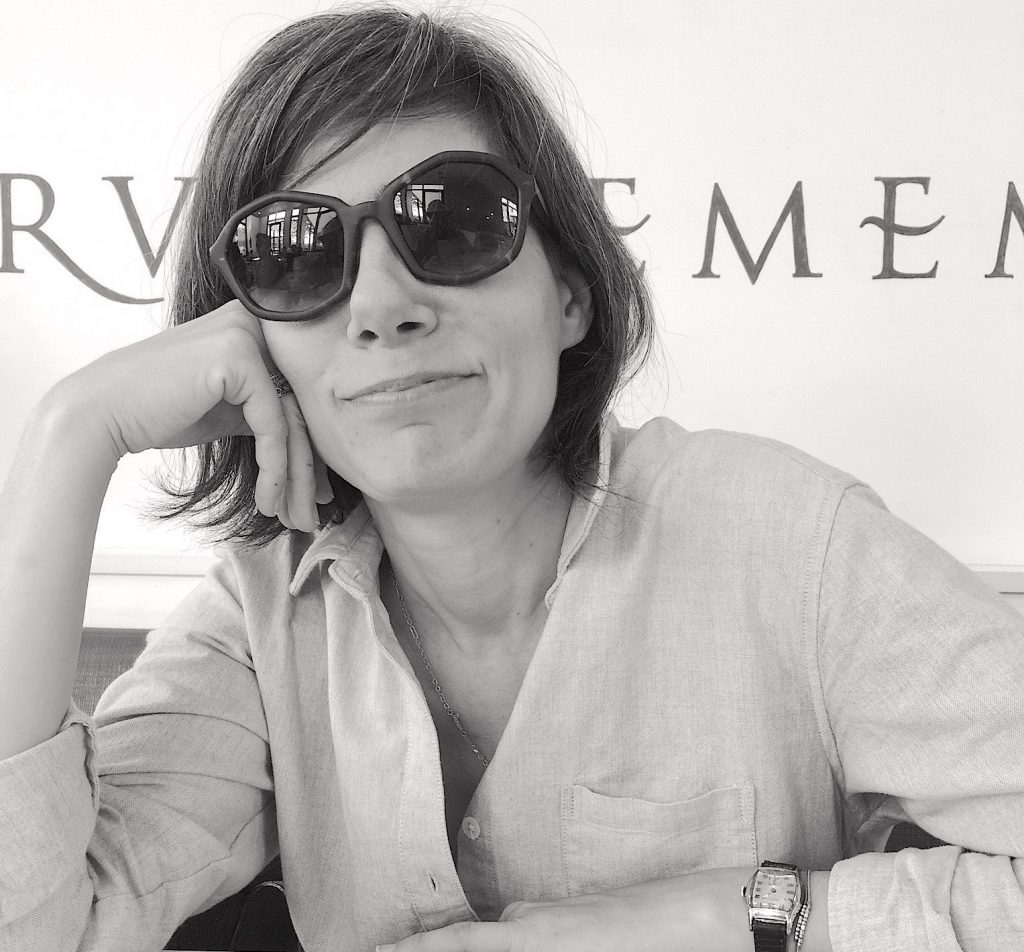
Eugenia Bell is the guest editor for playtime.pem.org. She is the former executive editor of Design Observer and Design Editor of Frieze. Her writing has appeared in Frieze, Artforum, Bookforum, and Garage, among other places. Check out our weekly Play Digest link pack each Friday for more from Eugenia Bell.
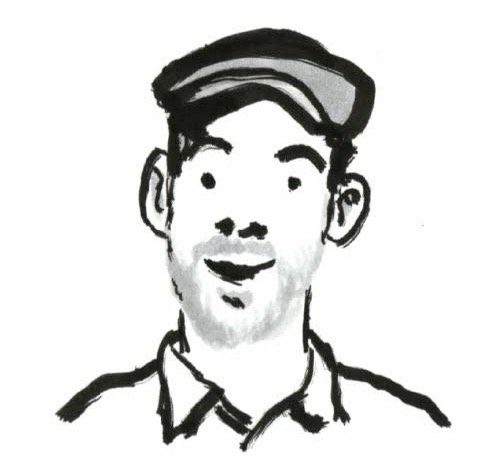
Adam Bessie is a writer whose cartoons and graphic journalism have been featured in The New Yorker, The Atlantic, Boston Globe, Los Angeles Times, and the Project Censored book series. Bessie is a professor of English at a San Francisco Bay area community college and the father of a kindergartener. His likeness is portrayed here by Marc Parenteau. Check out Adam Bessie and Jason Novak’s monthly comic, Board Gaming the System.

Kat Brewster is a writer and game designer whose work focuses on digital culture, specifically games. Brewster’s work has been featured in the Guardian and the Victoria and Albert Museum. Read Kat Brewster’s piece.

Rutherford Chang is an artist best known for his large-scale projects We Buy White Albums and Game Boy Tetris, an online exhibition in which he records himself playing Tetris over and over in an attempt to achieve the highest score ever recorded. His work aims to rearrange ordinary things to uncover the truths behind them. Watch Rutherford Chang compete for the top spot among Nintendo Game Boy Tetris players.

Katherine Cross is a doctoral student in sociology at the Graduate Center of The City University of New York. Cross is a widely published social critic whose work focuses on human-machine interactions, anti-social behaviour online, and the ways we engage with media. Check out Katherine Cross’s piece.

Adam Dixon designs and writes about games. His work explores communities, politics, civic tech, and entrepreneurship. Dixon has run workshops about games and game design at the Victoria and Albert Museum, Wellcome Collection, and NowPlayThis. Check out Adam Dixon’s piece.

Cara Ellison is a Scottish author and video game designer, though she started out making radio at BBC Radio 4. She has written for PC Gamer and The Guardian. Ellison’s book, Embed with Games, chronicles her travels around the world asking questions about why people make games and what they are for. Read Cara Ellison’s piece.

Stacey May Fowles is an award-winning novelist, journalist, and essayist. Editor of Best Canadian Sports Writing and author of the essay collection Baseball Life Advice, Fowles writes about books for The Globe and Mail, and baseball for Jays Nation and The Athletic. She lives in Toronto. Read Stacey May Fowles’s piece.

Tracy Fullerton is a game designer, educator and author. She is currently director of the joint University of Southern California Games Program, a collaboration between the School of Cinematic Arts and the Viterbi School of Engineering, and professor and chair of the Interactive Media & Games Division of the University of Southern California School of Cinematic Arts. Watch our interview with Tracy Fullerton.

Josh Gondelman is a writer and comedian who incubated in Boston before moving to New York City, where he currently lives and works as a writer for Last Week Tonight with John Oliver. He is also the co-author of the book You Blew It and co-founder of the Modern Seinfeld Twitter account. Check out Josh Gondelman and Molly Roth’s comic series Games Adults Play.

Lydia Gordon is an Assistant Curator for Exhibitions and Research at the Peabody Essex Museum. Prior to joining PEM, Gordon worked for the Society of Contemporary Art at the Art Institute of Chica go and as a Curatorial Fellow for the department of Exhibitions and Exhibitions Studies at the School of the Art Institute of Chicago. Read more from Lydia Gordon. Gordon will be moderating the upcoming panel Game Changers: Women Activists in the Digital Space, at PEM on Saturday, May 5, at 4:15 pm.
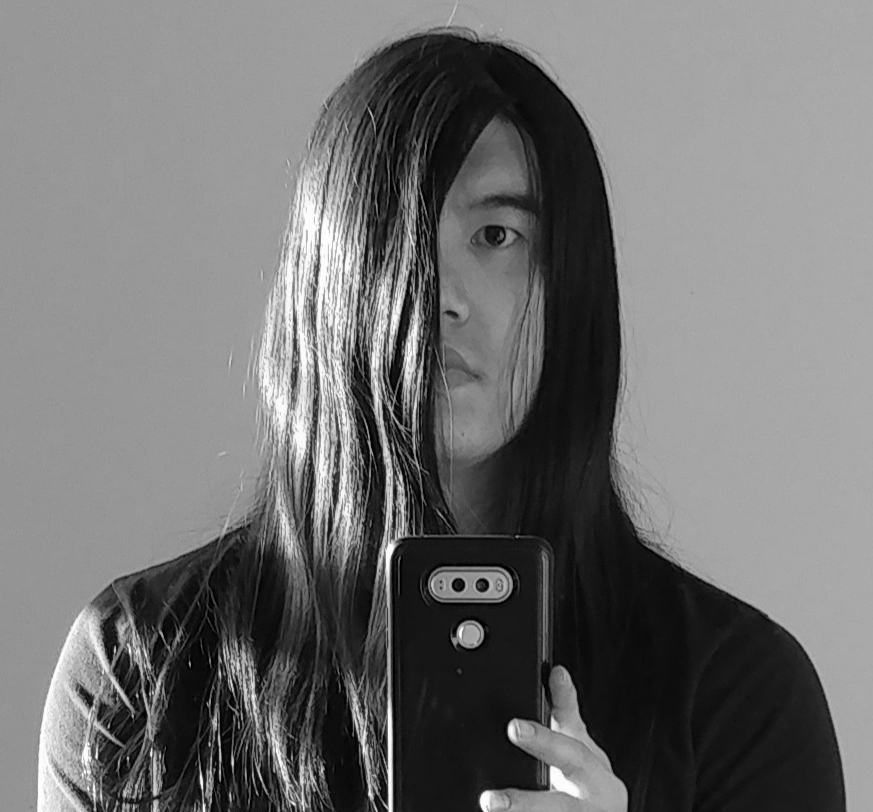
Frank Guan, music columnist at Vulture, is interested in the experience and economics of video games. His work has been published in New York Magazine, The New Republic, and n+1. Guan is also a poet and the founding editor of the poetry magazine Prelude. Read more from Frank Guan.

Charlie Hall is a senior reporter for Polygon, a leading games website. His work covers games and the people who make them. He specializes in embedded reporting, uncovering narratives inside obscure communities. His work includes a history of interaction with U.S. military and intelligence agencies. Check out Charlie Hall’s piece.

Owen Hatherley writes regularly on aesthetics and politics for the Architectural Review, The Calvert Journal, Dezeen, the Guardian, Jacobin, the London Review of Books, and New Humanist, among other publications. He is the author of several books, most recently Landscapes of Communism, The Ministry of Nostalgia, and The Chaplin Machine. Read Owen Hatherley’s piece.

Virginia Heffernan is a journalist, author, and cultural critic. She is currently a contributing editor at Politico, co-host of Trumpcast on Slate, and a columnist at Fast Company. Previously, she wrote “The Medium,” a column on internet culture for The New York Times Magazine. Her most recent book is Magic and Loss: The Internet as Art. Read Virginia Heffernan’s piece.
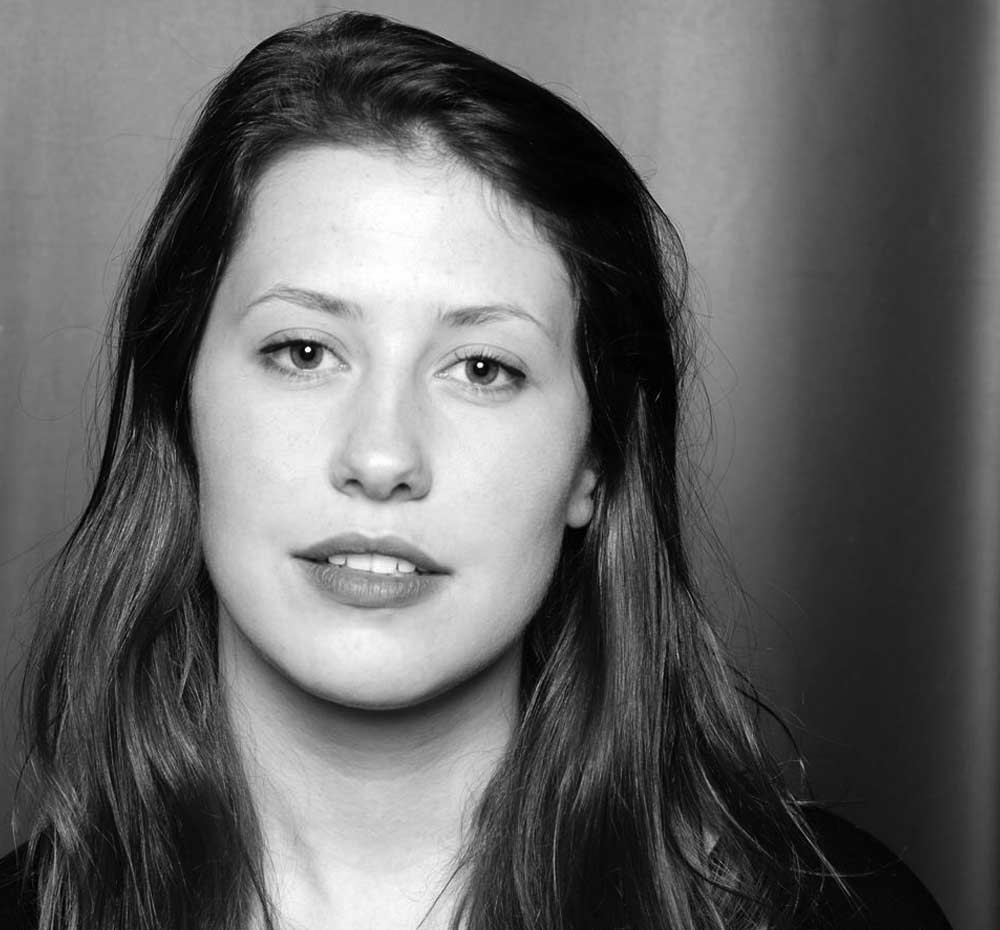
Claire Hentschker is an artist and current graduate student at Carnegie Mellon University. She is interested in site specific mixed reality, and her virtual reality work has been shown at the Carnegie Museum of Art, VIA Festival, and the Free State Festival. Check out Claire Hentschker’s work.

Martin Herbert is a writer and critic based in Berlin. His critical writing appears regularly in Artforum, Frieze, Art Monthly, and ArtReview, where he is associate editor. He is the author of Mark Wallinger, The Uncertainty Principle, and Tell Them I Said No. He lectures regularly in international art schools and is on the jury for the 2017 Turner Prize. Read Martin Herbert’s piece on artist’s work and working in the studio.
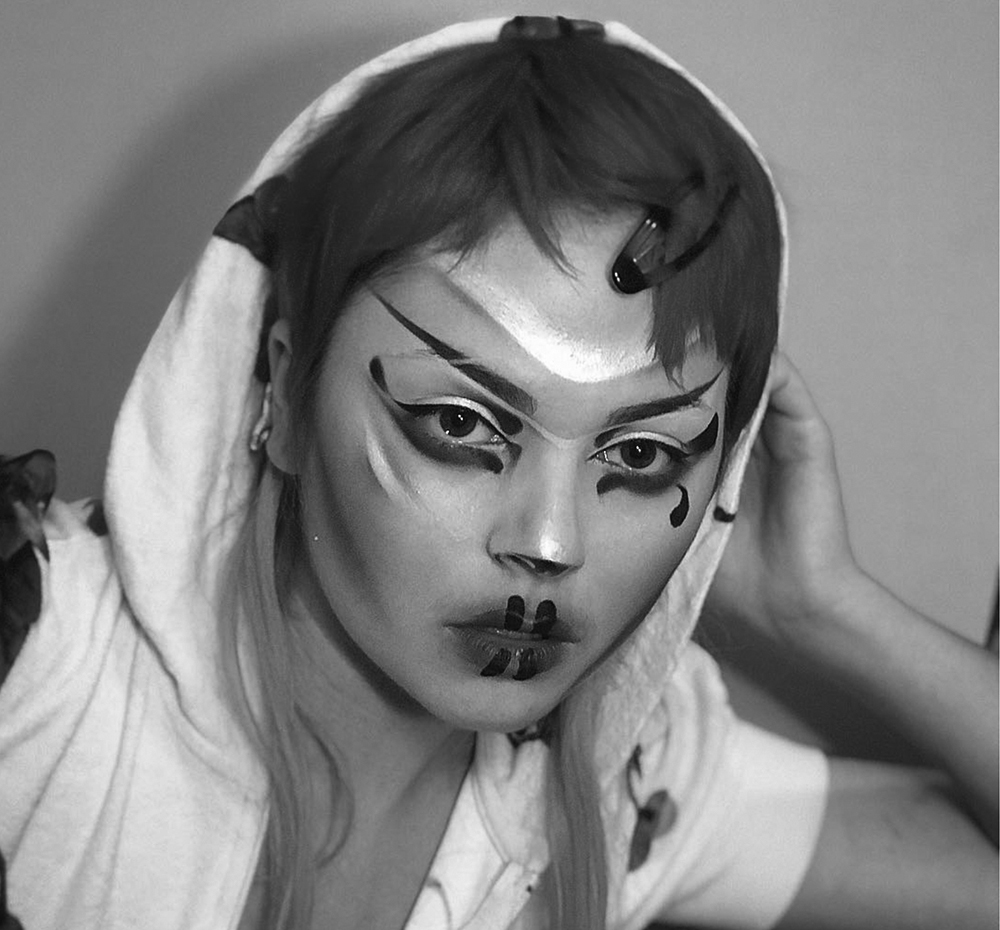
Juliana Horner is a designer, illustrator, and makeup artist living in New York City. She has been called “Instagram’s wildest makeup star” by Vogue. Check out the first of Juliana Horner’s three-part makeup series.

Sarrita Hunn is an interdisciplinary artist whose often collaborative practice focuses on the culturally, socially, and politically transformative potential of artist-centered activity. She is co-founder/editor of Temporary Art Review and the art editor for Exberliner, an English language print magazine in Berlin, Germany. Play Inter/de-pend-ence here.

Julia Jacquette is an American artist based in New York City and Amsterdam. Her work has been shown at the Museum of Modern Art, the Museum of Fine Arts Boston, and the RISD Museum, among other institutions. Jacquette’s work was recently the subject of a retrospective at the Tang Museum in Saratoga Springs, New York. She is currently on the faculty at the Fashion Institute of Technology, New York. Read Julia Jacquette’s piece.

Marisa Morán Jahn is an artist, multimedia designer, educator, and the founder of Studio REV-, a nonprofit organization that leads public art projects and tools to impact the lives of low-wage workers, immigrants, women, and youth. Learn more about Marisa Morán Jahn‘s work with PEM and Horizons for Homeless Children.

Melissa Kaseman is a photographer based in Seattle, Washington. Her work has been exhibited in group shows in Portland, Oregon; San Francisco; Ann Arbor, Michigan; and Santa Fe, New Mexico. She was an artist in residence at Minot State University in her hometown of Minot, North Dakota. Check out Melissa Kaseman’s photographs.

Andrew Kuo is a New York–based artist, who has held solo shows at Marlborough Chelsea, Galleria Marabini, and Artists Space, among others. Check out the start of our series of infographics from Andrew Kuo.

Javier Laspiur is a photographer based in Madrid, Spain. He is a senior art director at Comunica +A. Check out Javier Laspiur’s photographic series Consolas.
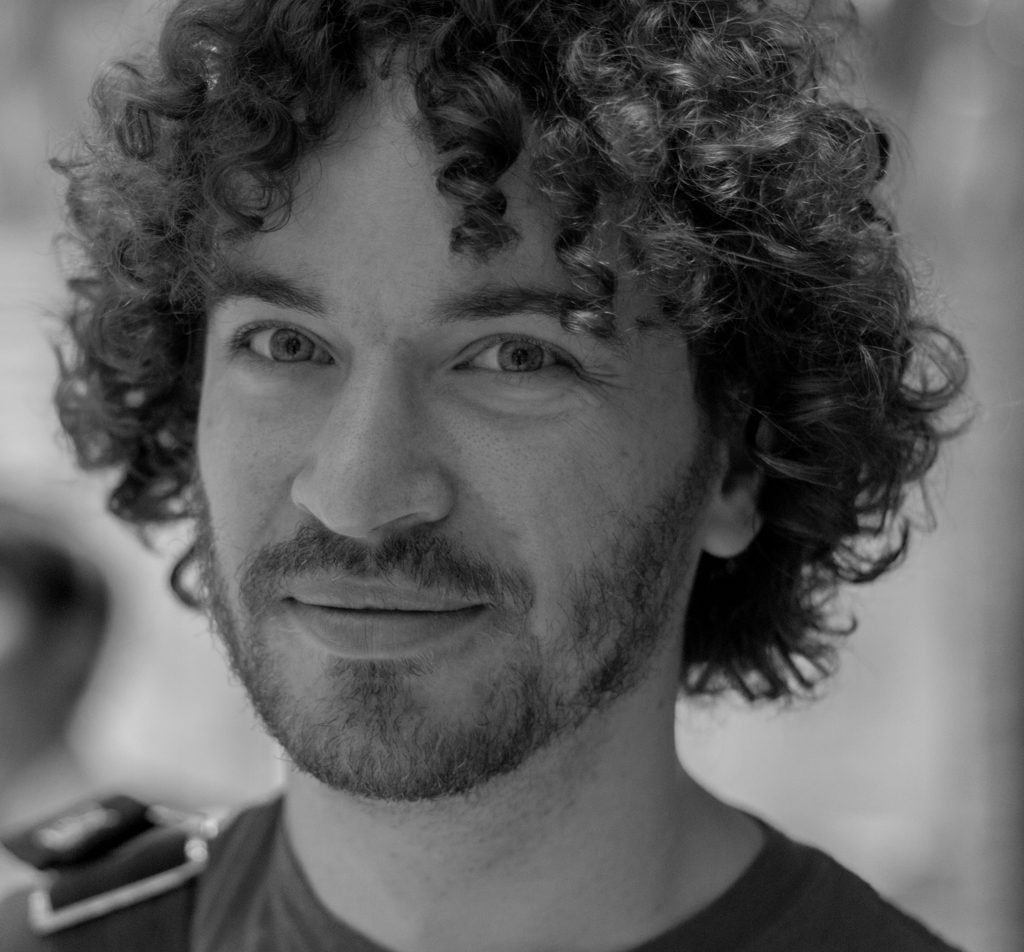
Mike Lazer-Walker makes interactive art, experimental games, and software tools. His work has been featured at IndieCade, the Game Developer’s Conference, the Smithsonian Museum and on NPR’s All Things Considered. Most of his work focuses on reframing everyday objects and spaces as playful experiences with nontraditional interaction models. Until recently, he worked with the MIT Media Lab’s Playful Systems research group. Read more from Mike Lazer-Walker.

J. Robert Lennon is the author of two story collections, Pieces For The Left Hand and See You in Paradise, and eight novels, including Mailman, Familiar, and Broken River. He teaches writing at Cornell University. Click through for J. Robert Lennon’s story game.
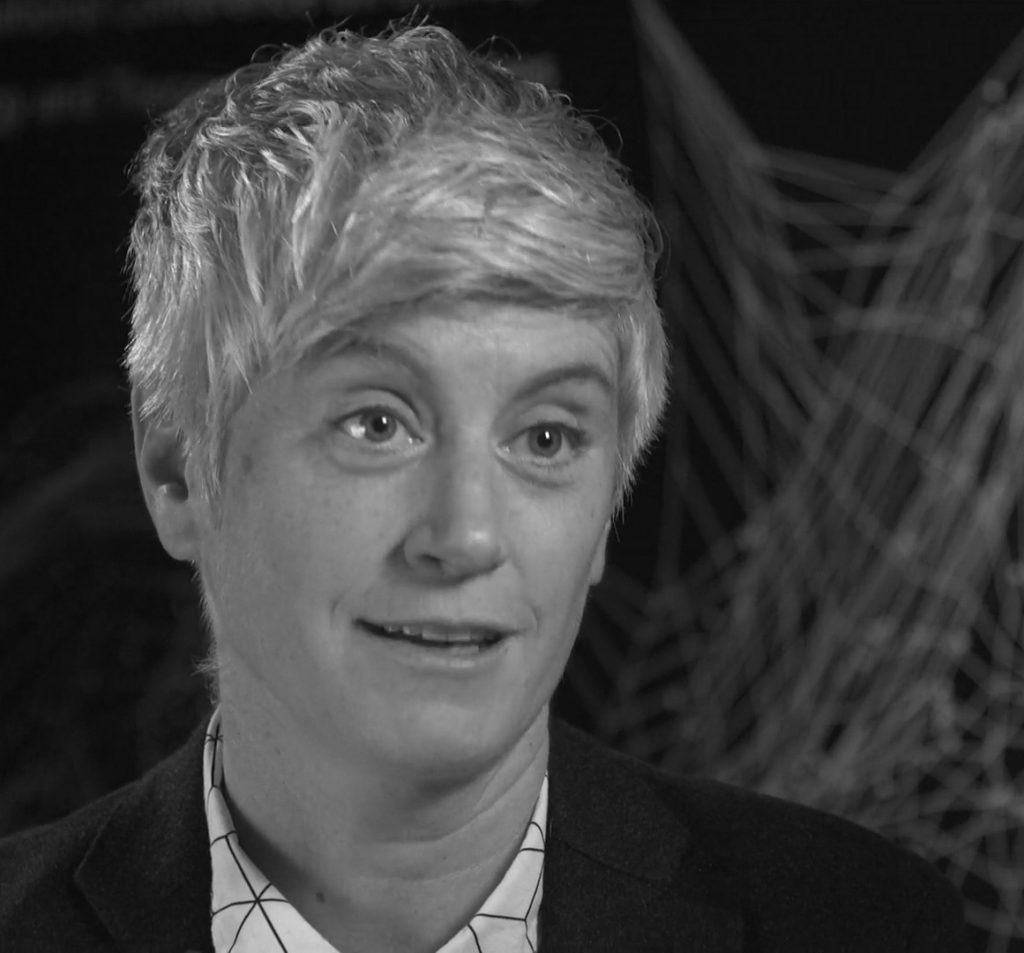
Colleen Macklin is a game designer, and associate professor of media design and co-director of Prototyping, Evaluation, Teaching and Learning Lab (PETLab), a public interest game design and research lab for interactive media, at Parsons School of Design. Her work has been shown at the Come Out and Play Festival, SoundLab, the Whitney Museum for American Art, and Creative Time. Watch our interview with Colleen Macklin.

Anne Miltenburg is a designer based in Nairobi, Kenya. An inveterate traveler, she has lived and worked across Europe, and in Mali, South Korea, Australia, and the U.S. Miltenburg is the founder of The Brandling. Read more from Anne Miltenburg.

Albert Mobilio is the author of several poetry collections and a fiction collection, Games and Stunts. Mobilio is an assistant professor of literary studies at the New School, an editor at Hyperallergic Weekend, and contributing editor at Bookforum. Check out the first story in our series from Albert Mobilio.

Anis Mojgani is a two-time National Poetry Slam Champion and winner of the International World Cup Poetry Slam. He is the author of five books. His latest is In the Pockets of Small Gods.
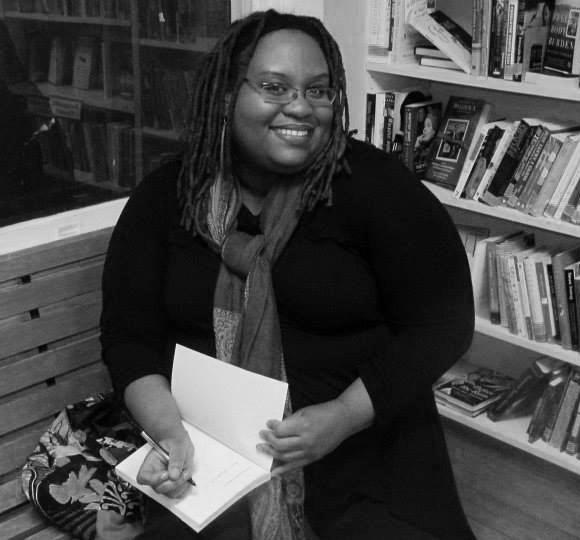
Susana Morris is a blogger, activist, and associate professor in the School of Literature, Media, and Communication at Georgia Institute of Technology. As co-founder of the Crunk Feminist Collective, she is committed to illuminating women’s stories and experiences. She is the author of Close Kin and Distant Relatives: The Paradox of Respectability in Black Women’s Literature. Read more from Susana Morris. Join us for the upcoming panel, Game Changers: Women Activists in Digital Space, with Angela Washko, Susana Morris, and Jane Friedhoff at PEM on Saturday, May 5, at 4:15 pm.

Jason Novak is a cartoonist. His work has appeared in The New Yorker, The Paris Review, The Rumpus, and Harper’s Weekly, and more. Check out Adam Bessie and Jason Novak’s monthly comic, Board Gaming the System.

Sergio Pellis is a professor of animal behavior and neuroscience at the University of Lethbridge in Canada. A central focus of his research is on the evolution, development and neurobiology of play behavior. Read more from Sergio Pellis.
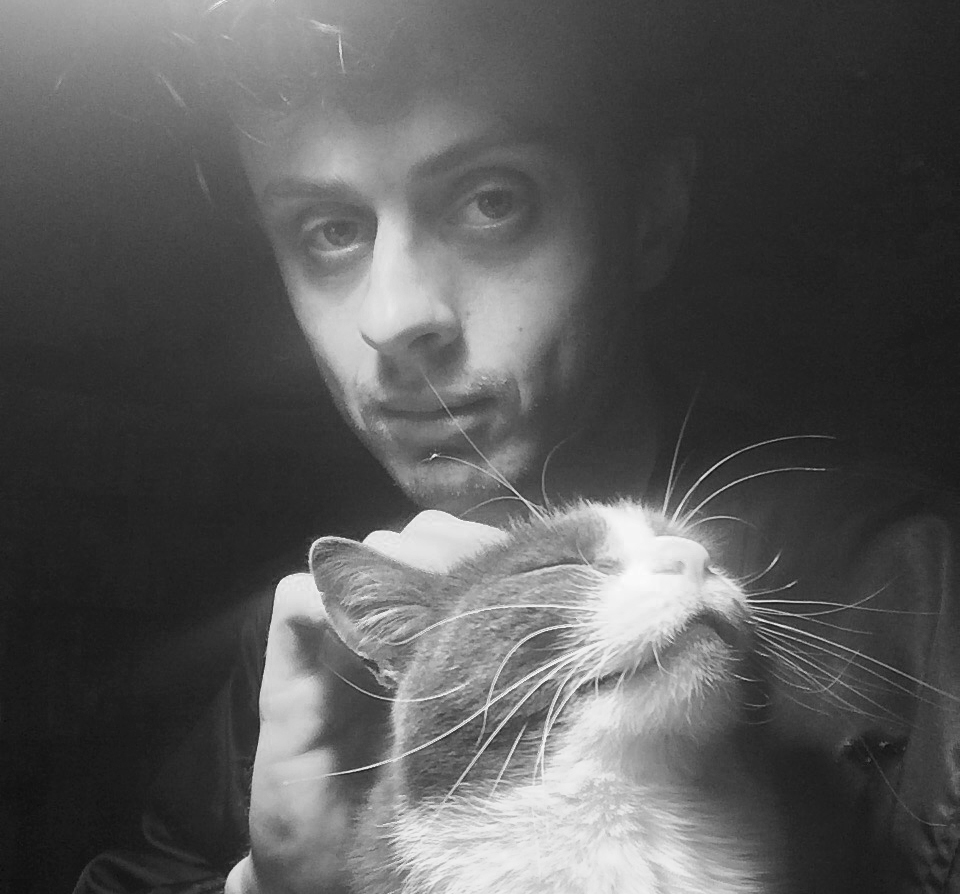
Alexander Perrin is an illustrator, technical artist, and game developer based in Melbourne, Australia. Perrin aims to create engaging, intuitive, and welcoming experiences that appeal to a wide range of players, including those who do not typically identify with the video game world. He is currently working alongside artist Josh Tatangelo at 2pt Design Studios to create considerate games and interactive media. Check out Alexander Perrin’s game A Short Trip.

Walker Pickering is a photographer and transmedia artist. A native Texan, he teaches photography, video, and bookmaking at the University of Nebraska. His work has been exhibited throughout the United States and internationally, and is included in a number of private and public collections, including the Museum of Fine Arts, Houston and The Wittliff Collection of Southwestern & Mexican Photography. Take a look at Walker Pickering’s photographic series Esprit de Corps.

Artist Pedro Reyes lives and works in Mexico City. He has won international attention for large-scale projects that address current social and political issues. His varied practice utilizes sculpture, performance, video, and activism. Watch our interview with Pedro Reyes.

Randall Roberts is a Los Angeles-based writer and journalist who covers music culture for the The Los Angeles Times. His work can be found online at ballparkvillage.com. Read more from Randall Roberts.

Carlo Rotella is a professor of English at Boston College. His book Cut Time: An Education at the Fights was a finalist for the Los Angeles Times Book Prize. Rotella’s work has also appeared in numerous publications, including the New York Times Magazine, Boston Globe, The New Yorker, Chicago Tribune, Harper’s Magazine, and The Believer. Check out Carlo Rotella’s work.

Molly Roth is a Michigan-born, Brooklyn-based graphic artist and humorist. She works on Last Week Tonight with John Oliver. Her work has appeared in The New Yorker Daily Shouts, McSweeney’s, and Vox. Check out Josh Gondelman and Molly Roth’s comic series Games Adults Play.
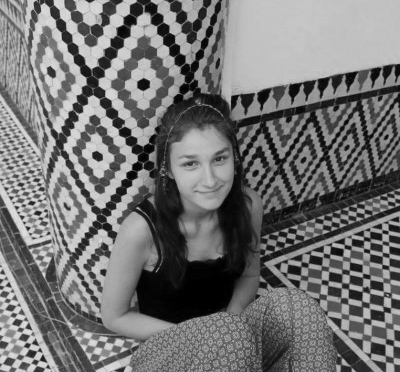
Naomi Russo is an Australian writer who generally covers design, art, and the environment. Her work has been published in the Atlantic and Australian Geographic. Read more from Naomi Russo.

Gwen Smith is a photographer living and working in New York. She describes herself as “an artist, a mother, a seeker, a finder, and a player.” Watch our interview with Gwen Smith.

Trevor Smith is Curator of the Present Tense at the Peabody Essex Museum and curator of PlayTime. He leads PEM’s Present Tense initiative, which celebrates the central role that creative expression plays in shaping our world today. Why PlayTime? Trevor Smith tells us more about the film that inspired the exhibition and its title.

Lizzie Stark is the author of Pandora’s DNA, which explores the history and science of the so-called ‘breast cancer genes,’ and Leaving Mundania, which investigates the subculture of live action roleplay, or LARP. Her journalism and essays have appeared in the Washington Post, Daily Beast, io9, Fusion, and Philadelphia Inquirer. Check out Lizzie Stark’s piece.

David Steinberg is a crossword puzzle constructor and editor. At fourteen, he became one of the youngest persons to ever publish a crossword puzzle with The New York Times, and has since authored two books of puzzles, Chromatics and Juicy Crosswords. Steinberg also founded the Pre-Shortzian Puzzle Project, a collaborative effort to build a digitized, fully analyzable database of New York Times crossword puzzles. David Steinberg’s custom PlayTime crossword can be found here.

Stanley Thangaraj is a socio-cultural anthropologist with interests in race, gender, sexuality, class, and ethnicity in Asian America in particular and in immigrant America in general. He is an assistant professor in the Colin Powell School for Civic and Global Leadership at the City College of New York. He is a former high school and collegiate athlete and coach who considers sport a key site to understand immigrant enculturation, racialization, and cultural citizenship. Read more from Stanley Thangaraj.
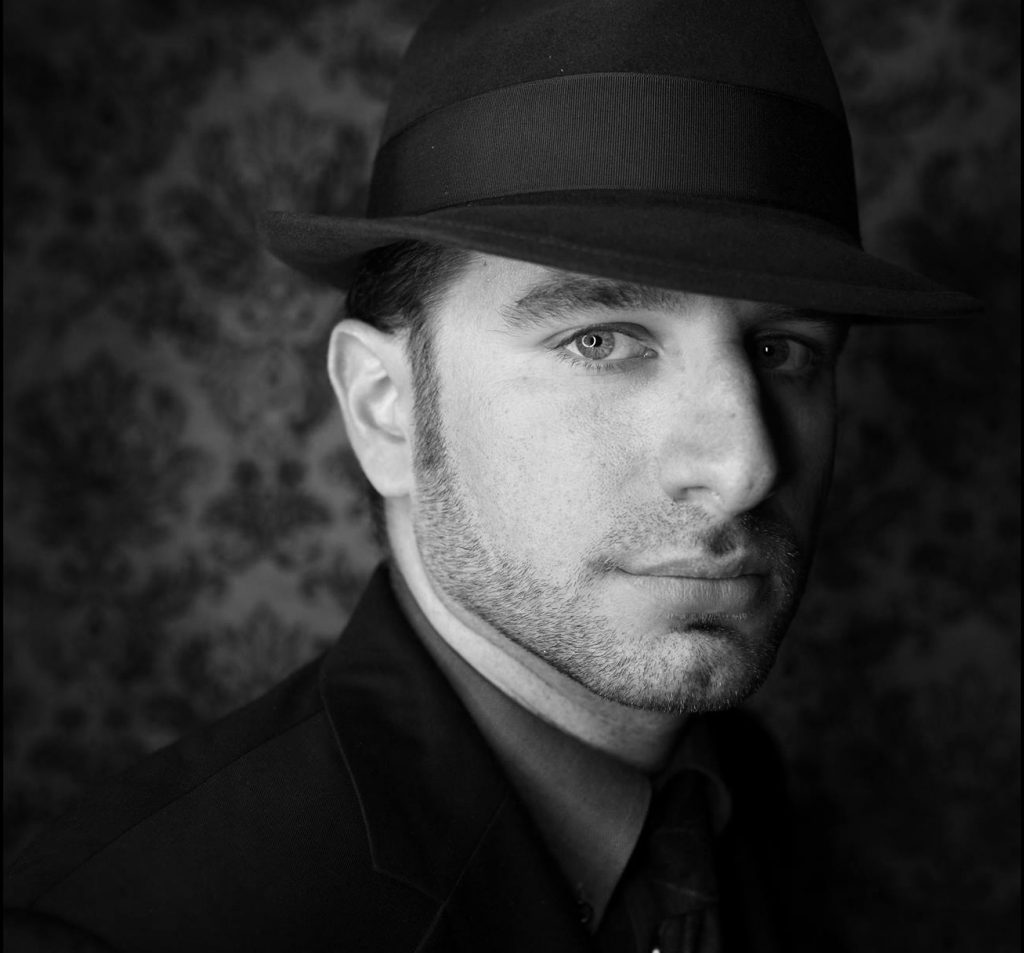
Photographer B.A. Van Sise’s work has been featured on the cover of The New York Times, in the pages of Newsday and the Washington Post, and on PBS NewsHour and NPR. A number of his portraits of notable American poets are in the collection of the Smithsonian National Portrait Gallery. Check out B.A. Van Sise’s photographs for PlayTime.

Angela Washko is an artist, writer, and facilitator devoted to creating new forums for discussions of feminism in the spaces most hostile toward it. She is a visiting assistant professor at Carnegie Mellon University. Since 2012, Washko has also been facilitating The Council on Gender Sensitivity and Behavioral Awareness in World of Warcraft. Watch our interview with Angela Washko. Join us for the upcoming panel, Game Changers: Women Activists in Digital Space, with Angela Washko, Susana Morris, and Jane Friedhoff at PEM on Saturday, May 5, at 4:15 pm.
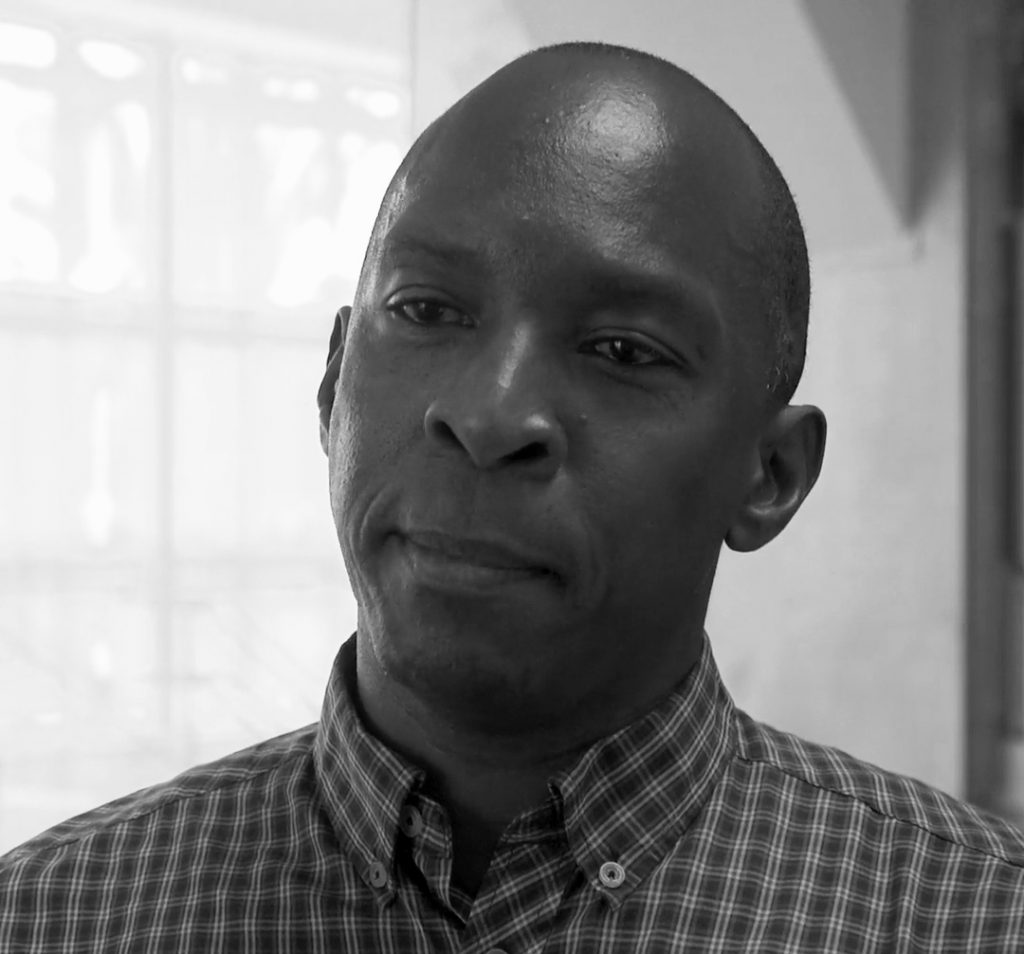
Boris Willis is Chief Artistic Officer of Boris Willis Moves and Associate Professor of Computer Game Design at George Mason University. Watch our interview with Boris Willis.
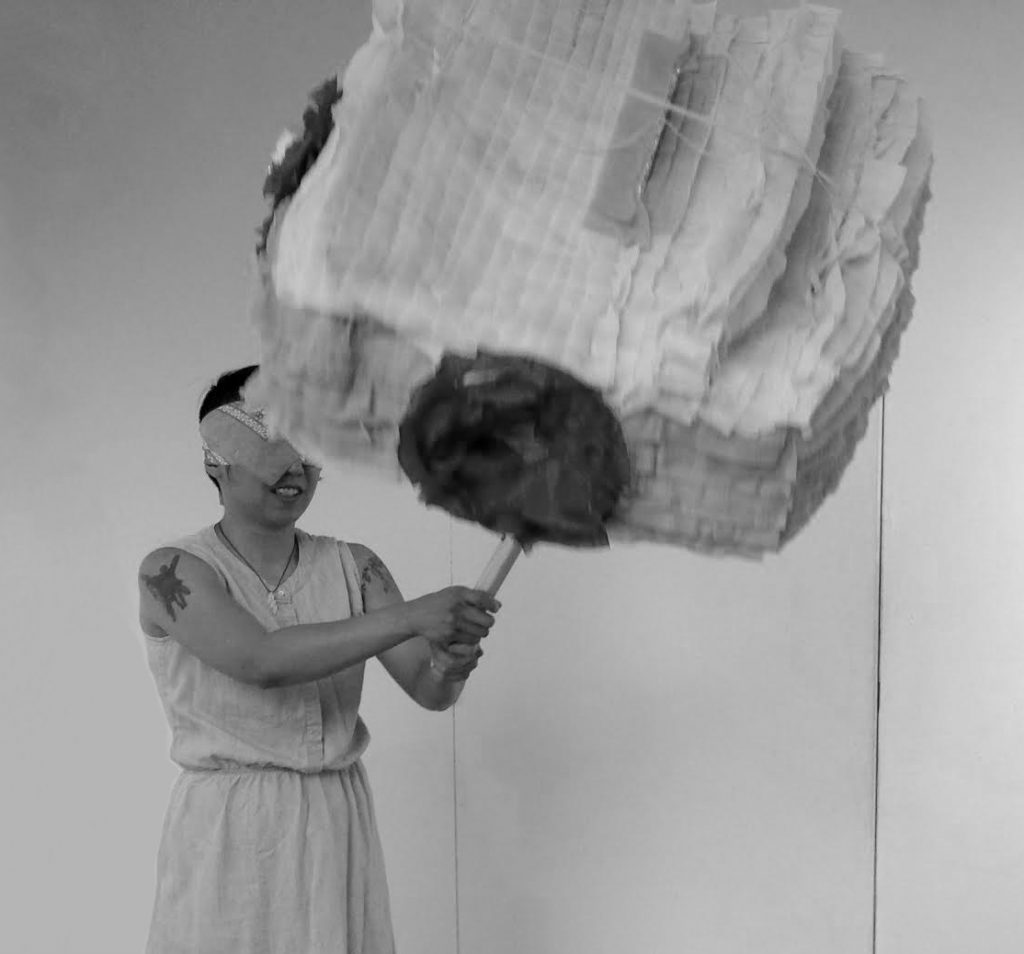
Christine Wong Yap is a New York–based artist. Her work has been exhibited in the San Francisco Bay area, as well as in New York, Los Angeles, Manila, Manchester, and more. Her work has been supported by the Queens Council on the Arts, the Jerome Foundation, and the Center for Cultural Innovation. Play Inter/de-pend-ence here.
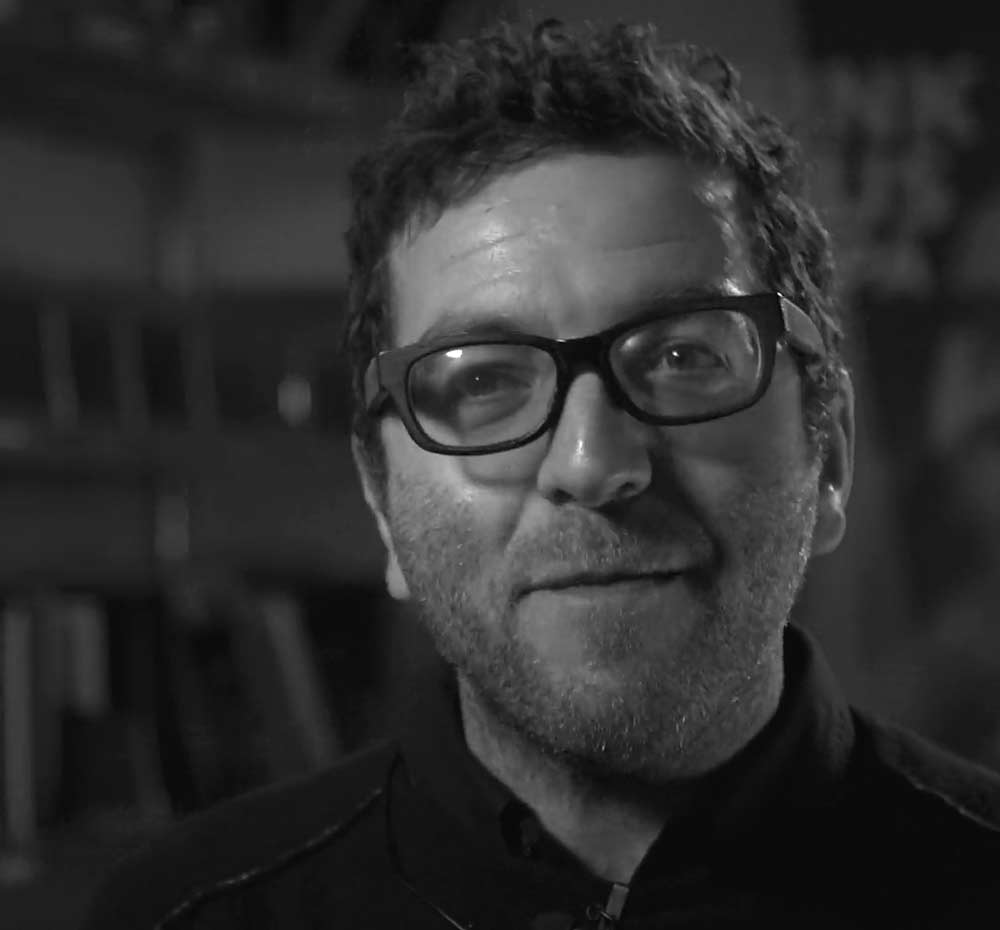
Eric Zimmerman is a game designer and co-founder of the game studio Gamelab, game design collective Local No. 12, and The Institute of Play. He is a founding faculty and arts professor at the New York University Game Center in the Tisch School of the Arts. His book, Rules of Play (with Katie Salen), was published in 2003. Watch our interview with Eric Zimmerman.












